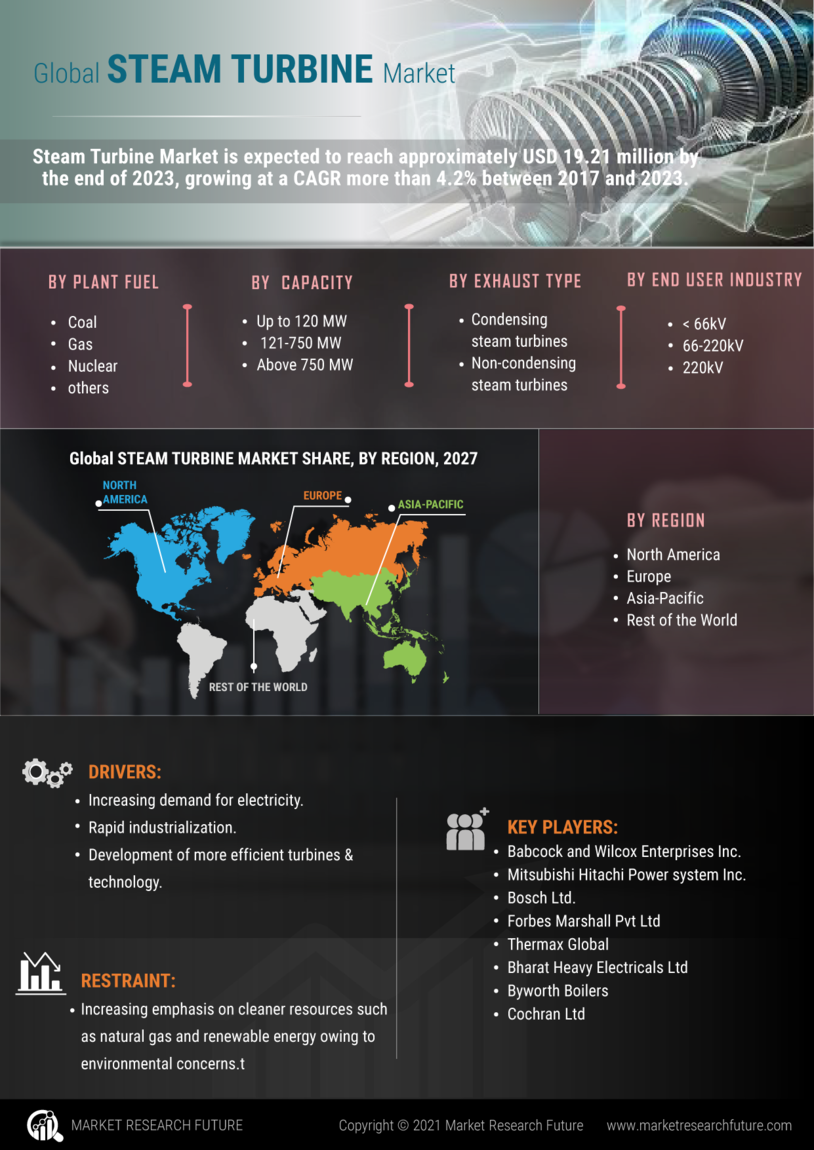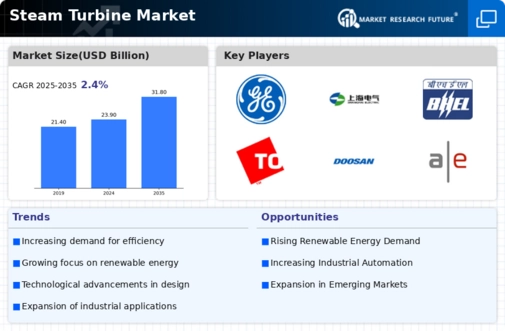Market Trends and Projections
Growing Need for Energy Efficiency
The Global Steam Turbine Market Industry is increasingly driven by the growing emphasis on energy efficiency across various sectors. Industries are seeking to optimize their energy consumption to reduce costs and minimize environmental impact. Steam turbines, known for their high efficiency in converting thermal energy into mechanical energy, are becoming a preferred choice for power generation. This trend is particularly evident in sectors such as oil and gas, where operational efficiency is paramount. The focus on energy efficiency is likely to sustain market growth, as industries continue to adopt steam turbines as part of their energy management strategies.
Government Initiatives and Policies
Government initiatives aimed at enhancing energy security and promoting sustainable practices are significantly impacting the Global Steam Turbine Market Industry. Many nations are implementing regulations that encourage the use of cleaner technologies in power generation. For instance, incentives for renewable energy projects often include the integration of steam turbines, which are essential for efficient energy conversion. These policies not only support the growth of the steam turbine market but also align with global efforts to combat climate change. As a result, the industry is poised for growth, with increasing investments expected to drive market expansion in the coming years.
Increasing Demand for Renewable Energy
The Global Steam Turbine Market Industry is experiencing a notable shift towards renewable energy sources. Governments worldwide are implementing policies to reduce carbon emissions, leading to a surge in investments in renewable energy projects. For instance, countries are increasingly integrating steam turbines in biomass and geothermal power plants, which are essential for harnessing renewable energy. This transition is projected to drive the market's growth, with the industry expected to reach 23.9 USD Billion in 2024. The emphasis on sustainability and energy efficiency is likely to further bolster the demand for steam turbines in the coming years.
Rising Industrialization and Urbanization
The Global Steam Turbine Market Industry is benefiting from the rapid industrialization and urbanization occurring in emerging economies. As countries develop their infrastructure, the demand for electricity is escalating, necessitating the installation of efficient power generation systems. Steam turbines play a critical role in meeting this demand, particularly in sectors such as manufacturing and chemical processing. The increasing need for reliable power sources is likely to propel the market forward, contributing to the industry's projected growth to 31.8 USD Billion by 2035. This trend underscores the importance of steam turbines in supporting industrial growth and urban development.
Technological Advancements in Turbine Design
Innovations in turbine technology are significantly influencing the Global Steam Turbine Market Industry. Enhanced designs, such as high-efficiency steam turbines and advanced materials, are improving performance and reliability. For example, the development of combined cycle power plants, which utilize both gas and steam turbines, is optimizing energy output. These advancements not only increase efficiency but also reduce operational costs, making steam turbines more attractive to energy producers. As a result, the market is anticipated to grow steadily, with a projected CAGR of 2.62% from 2025 to 2035, reflecting the ongoing evolution of turbine technology.







